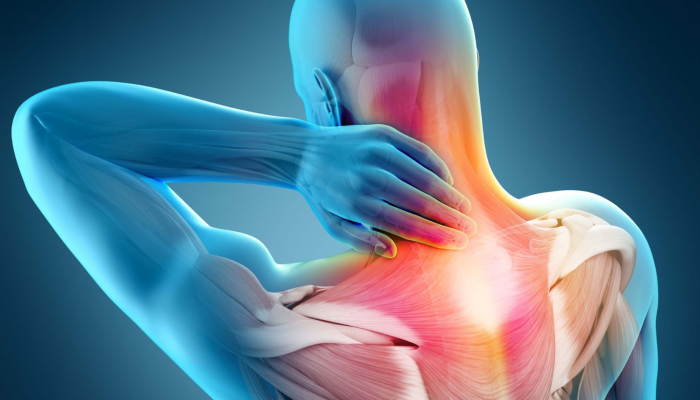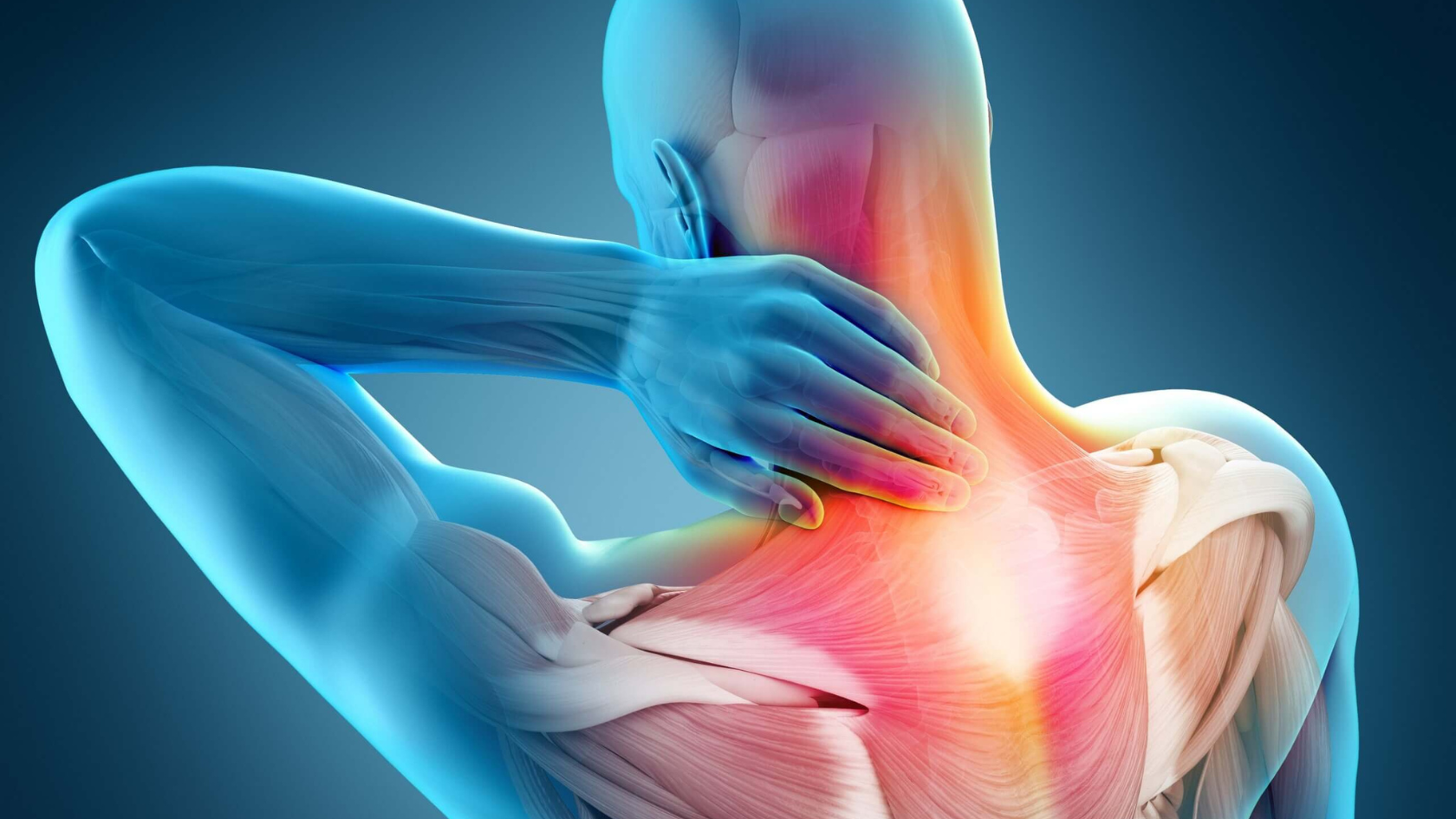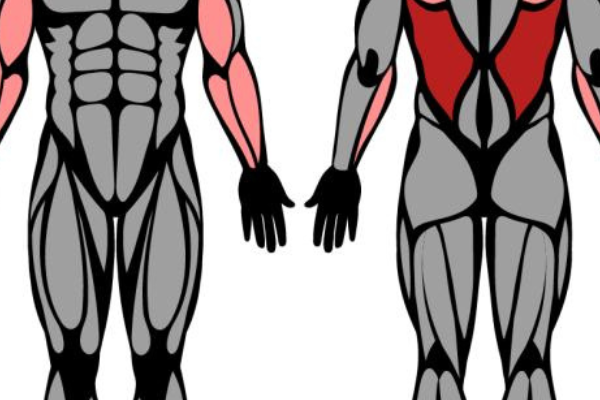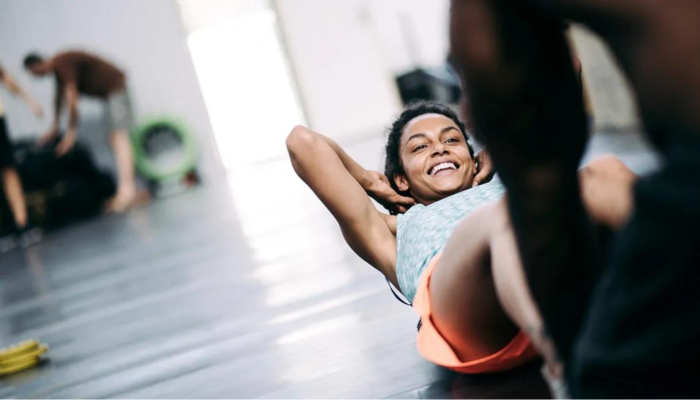
How Does Stress and Anxiety Cause Tension in Your Neck and Shoulders?
Stress and anxiety can cause a range of physical symptoms, including tension in your neck and shoulders. When you’re stressed, your body releases hormones like cortisol and adrenaline, which prepare your muscles for a “fight or flight” response. This often leads to muscle tightening, particularly in the neck and shoulder regions. Prolonged stress can make these muscles stay contracted, resulting in chronic pain and discomfort.
What Can You Do to Ease Stress-Related Neck and Shoulder Pain?
Easing stress-related tension in your neck and shoulders involves a combination of physical exercises, relaxation techniques, and lifestyle adjustments. Here are five effective exercises to help relax tight muscles in your neck and shoulders:
1. Neck Stretch
Performing neck stretches can significantly relieve muscle tension. Here’s how to do it:
- Sit or stand with your back straight.
- Slowly tilt your head towards your right shoulder, bringing your ear as close to your shoulder as possible without straining.
- Hold the stretch for 15-30 seconds, then return to the starting position.
- Repeat on the left side.
- Do this exercise 2-3 times on each side to relax your neck muscles naturally.
2. Neck Release
The neck release is a simple yet effective exercise to reduce muscle tension:
- Sit or stand with your back straight.
- Lower your chin towards your chest and hold for 15-30 seconds.
- Slowly lift your head back to the starting position.
- Repeat this exercise 2-3 times to release tight neck muscles.
3. Child’s Pose
Child’s Pose, a popular yoga position, can help relieve tension in the neck and shoulders:
- Kneel on the floor with your big toes touching and knees spread apart.
- Sit back on your heels, then stretch your arms forward, lowering your torso between your knees.
- Rest your forehead on the ground and relax in this position for 1-2 minutes.
- Focus on deep breathing to enhance relaxation.
4. Cat-Cow Pose
The Cat-Cow Pose helps to loosen tense neck and shoulder muscles while improving flexibility:
- Start on your hands and knees in a tabletop position.
- Inhale and arch your back (Cow Pose), lifting your head and tailbone towards the ceiling.
- Exhale and round your spine (Cat Pose), tucking your chin to your chest.
- Alternate between these two positions for 1-2 minutes, moving with your breath.
5. Thread the Needle
Thread the Needle is another beneficial yoga pose to relieve muscle tension in the neck and shoulders:
- Start on your hands and knees in a tabletop position.
- Slide your right arm underneath your left arm, resting your right shoulder and temple on the floor.
- Hold the stretch for 30-60 seconds, then switch sides.
- Repeat 2-3 times on each side to release neck muscle tension.
Other Options for Neck and Shoulder Tension
Aside from these exercises, there are other ways to relieve tension in your neck and shoulders:
- Heat Therapy: Applying a warm compress or taking a hot shower can relax tight muscles.
- Massage: Professional massage therapy or using a foam roller can help reduce muscle tightness.
- Posture Correction: Maintaining proper posture while sitting and standing can prevent muscle strain.
Tips for Managing Stress and Anxiety
Managing stress and anxiety is crucial to reducing muscle tension. Here are some strategies:
Stress Management Skills
- Mindfulness and Meditation: Practicing mindfulness or meditation can help calm your mind and reduce stress.
- Exercise: Regular physical activity, such as walking, swimming, or yoga, can relieve anxiety muscle tension.
- Adequate Sleep: Ensure you get enough restful sleep each night to support muscle recovery and overall well-being.
- Healthy Diet: Eating a balanced diet rich in vitamins and minerals can support muscle health and reduce tension.
The Bottom Line
Tension in your neck and shoulders is a common symptom of stress and anxiety, but it can be managed with the right techniques. Incorporating exercises like neck stretches, neck releases, Child’s Pose, Cat-Cow Pose, and Thread the Needle into your routine can help relax your neck muscles and alleviate discomfort. Additionally, adopting stress management strategies will not only reduce muscle tension but also improve your overall quality of life. Remember, taking care of your mental health is just as important as caring for your physical health.
By understanding the connection between stress, anxiety, and physical tension, you can take proactive steps to reduce discomfort and promote relaxation. Here are a few more tips and techniques to further ease muscle tension in your neck and shoulders:
Additional Techniques for Relieving Neck and Shoulder Tension
Progressive Muscle Relaxation
Progressive muscle relaxation involves tensing and then slowly releasing each muscle group in your body. This method can help you become more aware of physical sensations and reduce overall tension.
- Find a quiet, comfortable place to sit or lie down.
- Start with your toes, tensing the muscles for 5-10 seconds, then slowly releasing.
- Gradually move up through your body, including your neck and shoulders.
- Breathe deeply and focus on the feeling of relaxation.
Deep Breathing Exercises
Deep breathing exercises can help calm your mind and reduce physical stress. Practicing these exercises regularly can lead to a significant decrease in muscle tension.
- Sit or lie down in a comfortable position.
- Close your eyes and take a slow, deep breath in through your nose, filling your lungs completely.
- Hold your breath for a few seconds.
- Exhale slowly through your mouth, letting go of any tension.
- Repeat this process for 5-10 minutes.
Regular Movement and Stretching
Incorporating regular movement and stretching into your daily routine can prevent the build-up of tension in your neck and shoulders.
- Take Breaks: If you sit for long periods, take breaks to stand, stretch, and move around.
- Ergonomic Adjustments: Ensure your workstation is set up to promote good posture, with your computer screen at eye level and your chair providing proper support.
- Stretching Routine: Develop a daily stretching routine focusing on your neck and shoulders to keep muscles flexible and reduce stiffness.
Stress Management Skills: Beyond Physical Techniques
While physical exercises and techniques are essential, managing stress from a holistic perspective can provide more comprehensive relief. Here are some additional strategies:
Mindfulness Meditation
Mindfulness meditation involves focusing on the present moment and accepting it without judgment. This practice can help reduce stress and improve your overall mental well-being.
- Find a quiet space where you won’t be disturbed.
- Sit comfortably and close your eyes.
- Focus on your breathing, noticing the sensation of each inhale and exhale.
- When your mind wanders, gently bring your focus back to your breath.
Journaling
Writing down your thoughts and feelings can be a therapeutic way to manage stress and anxiety.
- Set aside time each day to write in a journal.
- Reflect on your day, noting any sources of stress and how you responded.
- Identify patterns and consider how you might address recurring issues.
Cognitive Behavioral Therapy (CBT)
Cognitive Behavioral Therapy (CBT) is a form of therapy that helps individuals identify and change negative thought patterns. Working with a therapist trained in CBT can provide tools and techniques to better manage stress and anxiety.
- Find a licensed therapist specializing in CBT.
- Participate in regular sessions to explore and address stress-related issues.
- Practice CBT techniques outside of therapy sessions to reinforce positive changes.
Lifestyle Changes for Long-Term Relief
Long-term relief from neck and shoulder tension often requires lifestyle changes that promote overall health and well-being. Here are some key areas to focus on:
- Nutrition: Eating a balanced diet with plenty of fruits, vegetables, lean proteins, and whole grains can support muscle health and reduce inflammation.
- Hydration: Staying hydrated is crucial for maintaining muscle function and preventing cramps.
- Sleep Hygiene: Developing good sleep habits, such as maintaining a consistent sleep schedule and creating a relaxing bedtime routine, can improve the quality of your rest.
- Regular Exercise: Engaging in regular physical activity, such as walking, swimming, or yoga, can help reduce stress and improve muscle flexibility and strength.
If you have any questions for us, you can see more at: heathcarenow, Youtube, Twitter(X),…
See more of our other articles: What is Jaw Pain ?, Catabolism vs. Anabolism: What’s the Difference?, Tennis Ball Massage for Myofascial Trigger Points






